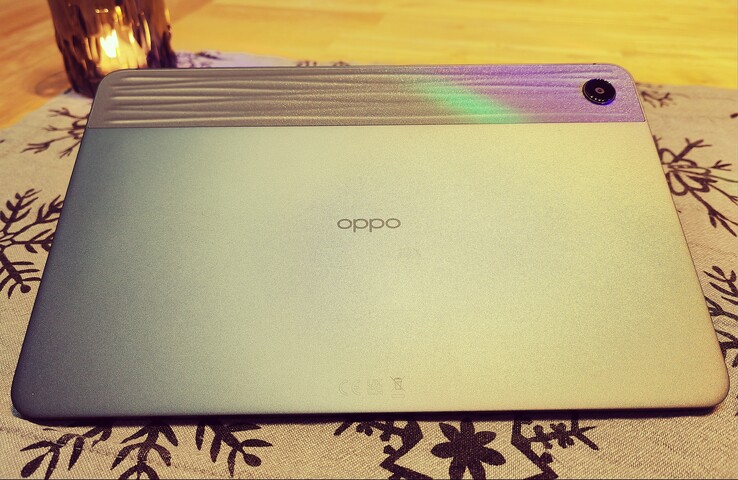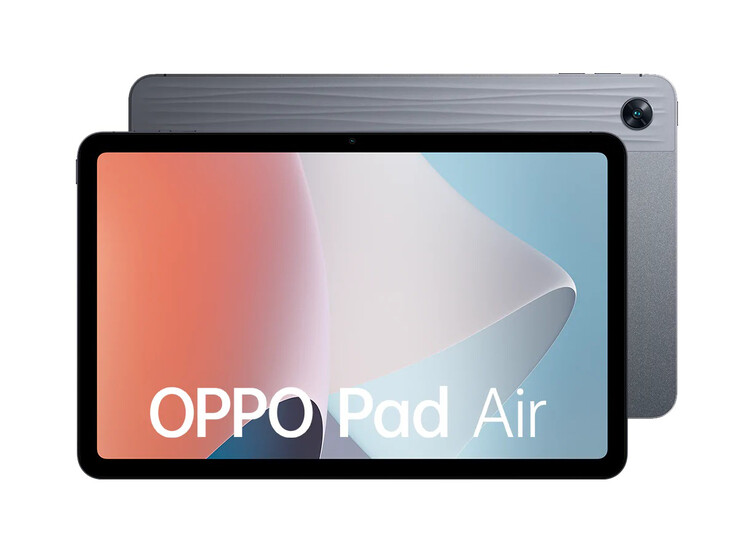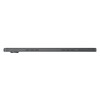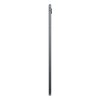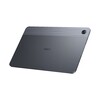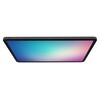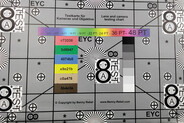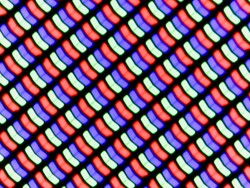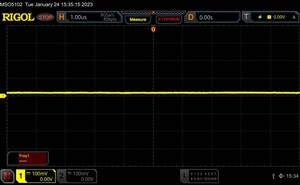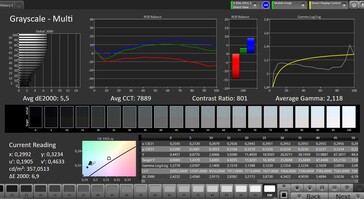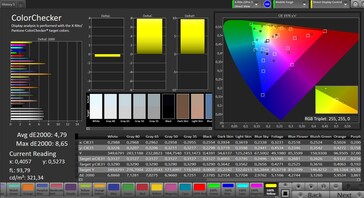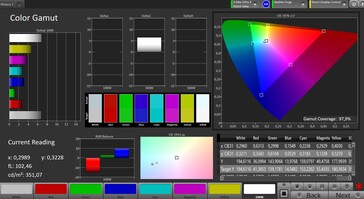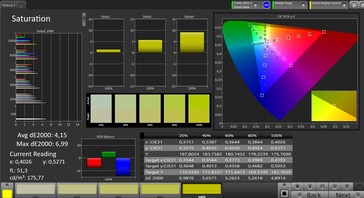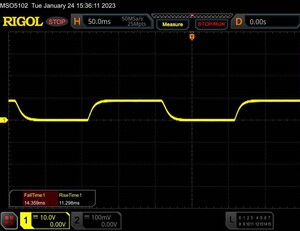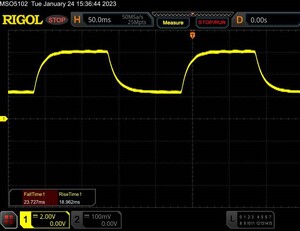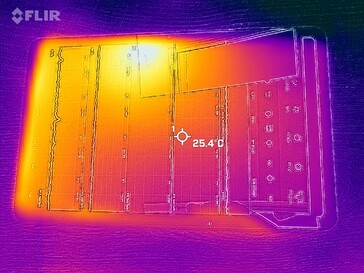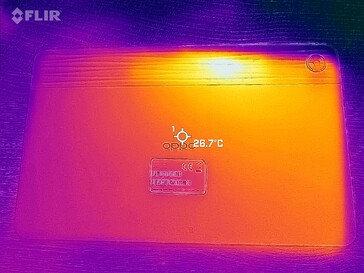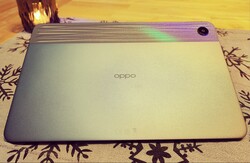Oppo Pad Air tablet review - Good speakers and ample battery
Possible competitors in comparison
Rating | Date | Model | Weight | Height | Size | Resolution | Best Price |
|---|---|---|---|---|---|---|---|
| 83.1 % | 01/2023 | Oppo Pad Air SD 680, Adreno 610 | 440 g | 6.9 mm | 10.36" | 2000x1200 | |
| 81.2 % | 01/2023 | Huawei MatePad SE SD 680, Adreno 610 | 440 g | 7.9 mm | 10.40" | 2000x1200 | |
| 81.7 % | 11/2022 | Honor Pad 8 SD 680, Adreno 610 | 520 g | 6.9 mm | 12.00" | 2000x1200 | |
| 84.6 % | 12/2022 | Xiaomi Redmi Pad Helio G99, Mali-G57 MP2 | 445 g | 7.05 mm | 10.61" | 2000x1200 | |
| 81 % | 02/2022 | Samsung Galaxy Tab A8 2022 T618, Mali-G52 MP2 | 508 g | 6.9 mm | 10.50" | 1920x1200 |
Case and features - Slim and light
With the Pad Air, Oppo brings a light tablet with a 10.36-inch screen that is not one of the cheapest devices, but it also looks very chic.
A plastic strip stretches across the back's upper casing edge, which reminds of tree bark or waves due to its pattern. On the one hand, this strip ensures a better first impression, since the rest of the back is made of metal. On the other hand, its glossy effects vary with the rest of the case and are thus a visual highlight.
The tablet is quite light at 440 grams and has a very slim silhouette of only 6.9 millimeters. The rather angular case nevertheless feels good in the hand. The screen's edges are the usual size, so you can hold the tablet without unintentionally triggering commands on the touchscreen.
The stability is good, but the tablet can be pressed in and twisted slightly in some places.
Oppo offers two storage variants of the tablet:
- 4 GB RAM / 64 GB mass storage: 300 Euros
- 4 GB RAM / 128 GB mass storage: 350 euro
There is no LTE variant nor an NFC module for mobile payments.
However, the storage can be expanded via the microSD slot. In our benchmarks with the Angelbird V60 reference card, the read rate repeatedly drops, but the reader otherwise offers good transfer rates.
| SD Card Reader - average JPG Copy Test (av. of 3 runs) | |
| Samsung Galaxy Tab A8 2022 (Angelbird AV Pro V60) | |
| Oppo Pad Air (Angelbird V60) | |
| Huawei MatePad SE (Angelbird V60) | |
| Xiaomi Redmi Pad (Angelbird AV Pro V60) | |
Cross Platform Disk Test (CPDT)
Communication, software and operation - Problems with face recognition
Thanks to WiFi 5, the Oppo Pad Air can surf the WLAN quite quickly. However, in our test with the reference router Asus ROG Rapture AXE11000, we noticed that the tablet is a bit slower than the competition at receiving direction, while there are fewer problems with the transmission.
The WLAN module's reception is perfect near the router, and it still has a signal strength of 50% at a distance of 10 meters and through 3 walls. Internet pages also loaded quite quickly there, so you do not have to install WLAN repeaters everywhere in the house for the Pad Air.
Oppo's ColorOS 12.1 is based on Android 12. The tablet is still reasonably up-to-date with security patches from December 2022 at the time of testing. Oppo has promised updates for a long time, but only for certain models. It remains to be seen how long the Pad Air will be updated. At least an update to Android 13 is planned for the first half of 2013.
The touchscreen is very reactive thanks to 120 Hz and can be used precisely up to the corners.
The tablet does not have a fingerprint sensor for biometric unlocking. However, facial recognition can be used. This does not work very well. You have to bring your face quite close to the tablet but it is not recognized reliably even then. The method is also not very secure due to the lack of additional hardware.
| Networking | |
| iperf3 receive AXE11000 | |
| Xiaomi Redmi Pad | |
| Honor Pad 8 | |
| Samsung Galaxy Tab A8 2022 | |
| Huawei MatePad SE | |
| Oppo Pad Air | |
| iperf3 transmit AXE11000 | |
| Xiaomi Redmi Pad | |
| Huawei MatePad SE | |
| Honor Pad 8 | |
| Oppo Pad Air | |
| Samsung Galaxy Tab A8 2022 | |
Cameras - You can take photos...
Like most tablets, the camera equipment is rather simple. An 8-megapixel sensor from Hynix is found on the back. It takes somewhat dim and not very detailed photos, which are also conspicuous by a lack of dynamics in dark or very bright areas. In the enlargement, the picture quality is poor because of the uneven protective glass of the lens.
In very low light and high contrasts, the result is also rather mediocre; at least you can recognize something in the picture. However, many areas look very pixelated and the dynamics also leave a lot to be desired.
Videos can be recorded in 1080p and 30 fps at most. The autofocus works with delays here, and colors are also lost in less light.
The front-facing camera has a resolution of 5 megapixels. It takes usable selfies in good light, but it shows how coarse the details are displayed when zoomed in. There is also a lack of detail in dark areas.
Image Comparison
Choose a scene and navigate within the first image. One click changes the position on touchscreens. One click on the zoomed-in image opens the original in a new window. The first image shows the scaled photograph of the test device.
Main cameraMain cameraLow Light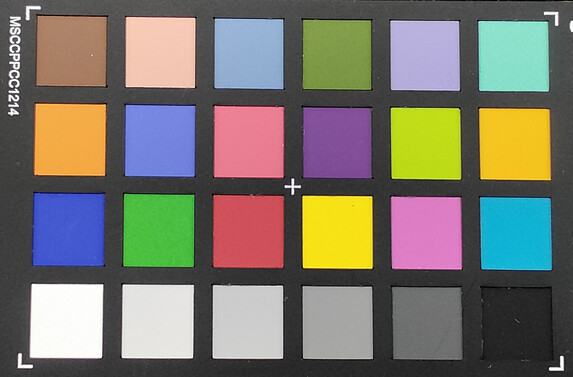
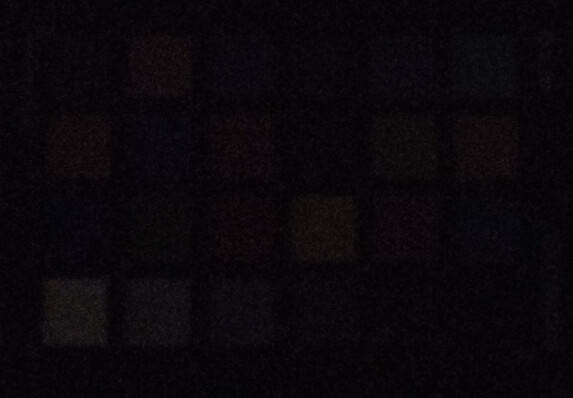
Display - Different brightness
Oppo specifies 360 nits as the maximum brightness for the display of the Pad Air. Our measurements are slightly below that and the Oppo Pad Air is also the tablet with the darkest screen in the comparison field. The brightness is sufficient for use in the living room, but you will quickly have problems with reflections outdoors.
In return, the panel has a maximum frame rate of 120 Hz, which none of the rivals can claim. Thus, scrolling is smoother and the tablet's reactivity is also higher.
The contrast is on a rather low level, and bright colors should not be expected from the Oppo Pad Air's display. A bluish cast in bright grayscales is also visible to the naked eye in the detailed measurements. Especially bright orange tones deviate strongly from the optimum of the color space.
We did not detect PWM in the display in our measurements.
| |||||||||||||||||||||||||
Brightness Distribution: 85 %
Center on Battery: 352 cd/m²
Contrast: 782:1 (Black: 0.45 cd/m²)
ΔE Color 4.79 | 0.5-29.43 Ø5
ΔE Greyscale 5.5 | 0.57-98 Ø5.3
97.9% sRGB (Calman 2D)
Gamma: 2.118
| Oppo Pad Air IPS, 2000x1200, 10.36 | Huawei MatePad SE IPS, 2000x1200, 10.40 | Honor Pad 8 IPS, 2000x1200, 12.00 | Xiaomi Redmi Pad IPS, 2000x1200, 10.61 | Samsung Galaxy Tab A8 2022 TFT-LCD, 1920x1200, 10.50 | |
|---|---|---|---|---|---|
| Screen | 23% | 11% | 37% | -20% | |
| Brightness middle | 352 | 398 13% | 379 8% | 418 19% | 368 5% |
| Brightness | 339 | 368 9% | 382 13% | 402 19% | 346 2% |
| Brightness Distribution | 85 | 87 2% | 84 -1% | 90 6% | 91 7% |
| Black Level * | 0.45 | 0.46 -2% | 0.3 33% | 0.28 38% | 0.61 -36% |
| Contrast | 782 | 865 11% | 1263 62% | 1493 91% | 603 -23% |
| Colorchecker dE 2000 * | 4.79 | 2.17 55% | 4.76 1% | 2.3 52% | 6.9 -44% |
| Colorchecker dE 2000 max. * | 8.65 | 4.32 50% | 9.25 -7% | 5.4 38% | 11.4 -32% |
| Greyscale dE 2000 * | 5.5 | 3.1 44% | 6.7 -22% | 3.7 33% | 7.7 -40% |
| Gamma | 2.118 104% | 2.214 99% | 2.234 98% | 2.21 100% | 2.16 102% |
| CCT | 7889 82% | 7245 90% | 8468 77% | 6595 99% | 8547 76% |
* ... smaller is better
Screen Flickering / PWM (Pulse-Width Modulation)
| Screen flickering / PWM not detected | |||
In comparison: 53 % of all tested devices do not use PWM to dim the display. If PWM was detected, an average of 17900 (minimum: 5 - maximum: 3846000) Hz was measured. | |||
Display Response Times
| ↔ Response Time Black to White | ||
|---|---|---|
| 25.7 ms ... rise ↗ and fall ↘ combined | ↗ 14.4 ms rise | |
| ↘ 11.3 ms fall | ||
| The screen shows relatively slow response rates in our tests and may be too slow for gamers. In comparison, all tested devices range from 0.1 (minimum) to 240 (maximum) ms. » 57 % of all devices are better. This means that the measured response time is worse than the average of all tested devices (21.5 ms). | ||
| ↔ Response Time 50% Grey to 80% Grey | ||
| 42.7 ms ... rise ↗ and fall ↘ combined | ↗ 23.7 ms rise | |
| ↘ 19 ms fall | ||
| The screen shows slow response rates in our tests and will be unsatisfactory for gamers. In comparison, all tested devices range from 0.2 (minimum) to 636 (maximum) ms. » 66 % of all devices are better. This means that the measured response time is worse than the average of all tested devices (33.7 ms). | ||
Performance, emissions and battery life - Good runtimes
With the Qualcomm Snapdragon 680 oppo has chosen an SoC that is often used for less expensive tablets: for example Huawei MatePad SE or the Honor Pad 8.
It offers enough performance for a mostly smooth system operation, but you should not expect higher demands and multitasking could also be a problem depending on the apps used. Xiaomi's Redmi Pad offers considerably more power.
Despite the 120 Hz screen, demanding gamers will probably have to look elsewhere; the SoC's power is not sufficient for high settings in many mobile games.
Oppo can score with the memory: the manufacturer installs UFS 2.2 flash instead of the slow eMMC and thus relegates the tablets from Huawei and Samsung to the ranks. This shortens loading times and speeds up data transfers.
We noticed that the tablet hardly warms up even under longer load in the temperature measurements. Furthermore, the SoC retains its performance even after numerous benchmark runs.
We like the speaker's sound, which does not overdrive and also integrates lower mids. Those who still prefer to connect headphones or external speakers can do so via USB-C or Bluetooth. Wireless codecs are aptX, aptX HD, SBC, AAC, and LDAC.
In terms of battery life, the light tablet convinces with its quite high-capacity battery, which enables a battery life of 13:43 hours in our WLAN test. The Xiaomi Redmi Pad can still go one better, but the Oppo Pad Air is overall very suitable for everyday use and will definitely survive a day of intensive use without being plugged in.
If you do have to charge it, you can do so with up to 18 watts. The battery needs about 3 hours until it is fully charged again.
PCMark for Android: Work 3.0
3DMark: Wild Life Score | Wild Life Unlimited Score | Wild Life Extreme | Wild Life Extreme Unlimited | 2560x1440 Sling Shot Extreme (ES 3.1) Unlimited | 2560x1440 Sling Shot Extreme (ES 3.1) Unlimited Graphics | 2560x1440 Sling Shot Extreme (ES 3.1) Unlimited Physics | 2560x1440 Sling Shot Extreme (Vulkan) Unlimited | 2560x1440 Sling Shot Extreme (Vulkan) Unlimited Graphics | 2560x1440 Sling Shot Extreme (Vulkan) Unlimited Physics | 2560x1440 Sling Shot Extreme (ES 3.1) | 2560x1440 Sling Shot Extreme (ES 3.1) Graphics | 2560x1440 Sling Shot Extreme (ES 3.1) Physics
GFXBench: 1920x1080 Aztec Ruins Normal Tier Offscreen | on screen Aztec Ruins Normal Tier Onscreen | 2560x1440 Aztec Ruins High Tier Offscreen | on screen Aztec Ruins High Tier Onscreen | 3840x2160 4K Aztec Ruins High Tier Offscreen
Octane V2: Total Score
| Geekbench 5.5 / Single-Core | |
| Average of class Tablet (140 - 1892, n=68, last 2 years) | |
| Xiaomi Redmi Pad | |
| Oppo Pad Air | |
| Honor Pad 8 | |
| Huawei MatePad SE | |
| Average Qualcomm Snapdragon 680 4G (323 - 384, n=14) | |
| Samsung Galaxy Tab A8 2022 | |
| Geekbench 5.5 / Multi-Core | |
| Average of class Tablet (312 - 8524, n=68, last 2 years) | |
| Xiaomi Redmi Pad | |
| Huawei MatePad SE | |
| Oppo Pad Air | |
| Average Qualcomm Snapdragon 680 4G (1287 - 1738, n=14) | |
| Honor Pad 8 | |
| Samsung Galaxy Tab A8 2022 | |
| PCMark for Android / Work 3.0 | |
| Xiaomi Redmi Pad | |
| Average of class Tablet (3195 - 17267, n=65, last 2 years) | |
| Samsung Galaxy Tab A8 2022 | |
| Honor Pad 8 | |
| Average Qualcomm Snapdragon 680 4G (4535 - 8730, n=14) | |
| Oppo Pad Air | |
| Huawei MatePad SE | |
| 3DMark / Wild Life Score | |
| Average of class Tablet (286 - 7933, n=60, last 2 years) | |
| Xiaomi Redmi Pad | |
| Samsung Galaxy Tab A8 2022 | |
| Average Qualcomm Snapdragon 680 4G (437 - 589, n=14) | |
| Oppo Pad Air | |
| Honor Pad 8 | |
| Huawei MatePad SE | |
| 3DMark / Wild Life Unlimited Score | |
| Average of class Tablet (289 - 25317, n=66, last 2 years) | |
| Xiaomi Redmi Pad | |
| Samsung Galaxy Tab A8 2022 | |
| Average Qualcomm Snapdragon 680 4G (417 - 574, n=14) | |
| Oppo Pad Air | |
| Honor Pad 8 | |
| Huawei MatePad SE | |
| 3DMark / Wild Life Extreme | |
| Average of class Tablet (75 - 6919, n=66, last 2 years) | |
| Xiaomi Redmi Pad | |
| Samsung Galaxy Tab A8 2022 | |
| Oppo Pad Air | |
| Honor Pad 8 | |
| Huawei MatePad SE | |
| Average Qualcomm Snapdragon 680 4G (22 - 130, n=15) | |
| 3DMark / Wild Life Extreme Unlimited | |
| Average of class Tablet (72 - 6909, n=64, last 2 years) | |
| Xiaomi Redmi Pad | |
| Samsung Galaxy Tab A8 2022 | |
| Oppo Pad Air | |
| Average Qualcomm Snapdragon 680 4G (112 - 130, n=13) | |
| Honor Pad 8 | |
| Huawei MatePad SE | |
| 3DMark / Sling Shot Extreme (ES 3.1) Unlimited | |
| Average of class Tablet (267 - 14235, n=60, last 2 years) | |
| Xiaomi Redmi Pad | |
| Samsung Galaxy Tab A8 2022 | |
| Oppo Pad Air | |
| Honor Pad 8 | |
| Huawei MatePad SE | |
| Average Qualcomm Snapdragon 680 4G (267 - 1429, n=14) | |
| 3DMark / Sling Shot Extreme (ES 3.1) Unlimited Graphics | |
| Average of class Tablet (240 - 24605, n=60, last 2 years) | |
| Xiaomi Redmi Pad | |
| Samsung Galaxy Tab A8 2022 | |
| Honor Pad 8 | |
| Oppo Pad Air | |
| Huawei MatePad SE | |
| Average Qualcomm Snapdragon 680 4G (240 - 1309, n=14) | |
| 3DMark / Sling Shot Extreme (ES 3.1) Unlimited Physics | |
| Xiaomi Redmi Pad | |
| Average of class Tablet (441 - 5751, n=60, last 2 years) | |
| Samsung Galaxy Tab A8 2022 | |
| Huawei MatePad SE | |
| Oppo Pad Air | |
| Honor Pad 8 | |
| Average Qualcomm Snapdragon 680 4G (441 - 2853, n=14) | |
| 3DMark / Sling Shot Extreme (Vulkan) Unlimited | |
| Xiaomi Redmi Pad | |
| Average of class Tablet (615 - 4741, n=50, last 2 years) | |
| Samsung Galaxy Tab A8 2022 | |
| Oppo Pad Air | |
| Average Qualcomm Snapdragon 680 4G (1234 - 1406, n=13) | |
| Honor Pad 8 | |
| Huawei MatePad SE | |
| 3DMark / Sling Shot Extreme (Vulkan) Unlimited Graphics | |
| Xiaomi Redmi Pad | |
| Average of class Tablet (521 - 5731, n=50, last 2 years) | |
| Samsung Galaxy Tab A8 2022 | |
| Average Qualcomm Snapdragon 680 4G (1087 - 1276, n=13) | |
| Oppo Pad Air | |
| Honor Pad 8 | |
| Huawei MatePad SE | |
| 3DMark / Sling Shot Extreme (Vulkan) Unlimited Physics | |
| Xiaomi Redmi Pad | |
| Oppo Pad Air | |
| Average of class Tablet (1671 - 3199, n=50, last 2 years) | |
| Huawei MatePad SE | |
| Average Qualcomm Snapdragon 680 4G (2185 - 2576, n=13) | |
| Samsung Galaxy Tab A8 2022 | |
| Honor Pad 8 | |
| 3DMark / Sling Shot Extreme (ES 3.1) | |
| Xiaomi Redmi Pad | |
| Average of class Tablet (361 - 14235, n=51, last 2 years) | |
| Samsung Galaxy Tab A8 2022 | |
| Average Qualcomm Snapdragon 680 4G (1231 - 1441, n=13) | |
| Honor Pad 8 | |
| Oppo Pad Air | |
| Huawei MatePad SE | |
| 3DMark / Sling Shot Extreme (ES 3.1) Graphics | |
| Xiaomi Redmi Pad | |
| Average of class Tablet (290 - 24605, n=51, last 2 years) | |
| Samsung Galaxy Tab A8 2022 | |
| Honor Pad 8 | |
| Average Qualcomm Snapdragon 680 4G (1077 - 1273, n=13) | |
| Oppo Pad Air | |
| Huawei MatePad SE | |
| 3DMark / Sling Shot Extreme (ES 3.1) Physics | |
| Xiaomi Redmi Pad | |
| Oppo Pad Air | |
| Average of class Tablet (858 - 5751, n=51, last 2 years) | |
| Samsung Galaxy Tab A8 2022 | |
| Huawei MatePad SE | |
| Average Qualcomm Snapdragon 680 4G (2301 - 2930, n=13) | |
| Honor Pad 8 | |
| GFXBench / Aztec Ruins Normal Tier Offscreen | |
| Average of class Tablet (2.5 - 279, n=70, last 2 years) | |
| Xiaomi Redmi Pad | |
| Samsung Galaxy Tab A8 2022 | |
| Oppo Pad Air | |
| Honor Pad 8 | |
| Huawei MatePad SE | |
| Average Qualcomm Snapdragon 680 4G (5.1 - 9.8, n=14) | |
| GFXBench / Aztec Ruins Normal Tier Onscreen | |
| Average of class Tablet (3 - 111, n=70, last 2 years) | |
| Xiaomi Redmi Pad | |
| Samsung Galaxy Tab A8 2022 | |
| Average Qualcomm Snapdragon 680 4G (4.6 - 17, n=14) | |
| Oppo Pad Air | |
| Huawei MatePad SE | |
| Honor Pad 8 | |
| GFXBench / Aztec Ruins High Tier Offscreen | |
| Average of class Tablet (0.9 - 90, n=70, last 2 years) | |
| Xiaomi Redmi Pad | |
| Samsung Galaxy Tab A8 2022 | |
| Honor Pad 8 | |
| Oppo Pad Air | |
| Huawei MatePad SE | |
| Average Qualcomm Snapdragon 680 4G (1.4 - 3.3, n=14) | |
| GFXBench / Aztec Ruins High Tier Onscreen | |
| Average of class Tablet (1.9 - 97.3, n=70, last 2 years) | |
| Xiaomi Redmi Pad | |
| Samsung Galaxy Tab A8 2022 | |
| Average Qualcomm Snapdragon 680 4G (2.7 - 11, n=14) | |
| Oppo Pad Air | |
| Huawei MatePad SE | |
| Honor Pad 8 | |
| GFXBench / 4K Aztec Ruins High Tier Offscreen | |
| Average of class Tablet (0.4 - 48, n=68, last 2 years) | |
| Xiaomi Redmi Pad | |
| Honor Pad 8 | |
| Oppo Pad Air | |
| Huawei MatePad SE | |
| Average Qualcomm Snapdragon 680 4G (1.3 - 1.5, n=9) | |
| Octane V2 / Total Score | |
| Average of class Tablet (2672 - 74614, n=72, last 2 years) | |
| Xiaomi Redmi Pad | |
| Honor Pad 8 | |
| Oppo Pad Air | |
| Average Qualcomm Snapdragon 680 4G (6358 - 14279, n=11) | |
| Samsung Galaxy Tab A8 2022 | |
| Huawei MatePad SE | |
| Oppo Pad Air | Huawei MatePad SE | Honor Pad 8 | Xiaomi Redmi Pad | Samsung Galaxy Tab A8 2022 | Average 128 GB UFS 2.2 Flash | Average of class Tablet | |
|---|---|---|---|---|---|---|---|
| AndroBench 3-5 | -72% | 1% | 30% | -72% | -10% | -13% | |
| Sequential Read 256KB | 921.6 | 293.6 -68% | 833.56 -10% | 976.9 6% | 255.1 -72% | 708 ? -23% | 850 ? -8% |
| Sequential Write 256KB | 717 | 99.5 -86% | 708.51 -1% | 883.6 23% | 101.1 -86% | 517 ? -28% | 532 ? -26% |
| Random Read 4KB | 177.1 | 61.8 -65% | 189.57 7% | 250.82 42% | 68.3 -61% | 188 ? 6% | 167 ? -6% |
| Random Write 4KB | 172.8 | 54 -69% | 186.95 8% | 257.02 49% | 57.5 -67% | 182.5 ? 6% | 150.8 ? -13% |
3DMark Wild Life Stress Test
(+) The maximum temperature on the upper side is 31.7 °C / 89 F, compared to the average of 33.8 °C / 93 F, ranging from 20.7 to 53.2 °C for the class Tablet.
(+) The bottom heats up to a maximum of 28 °C / 82 F, compared to the average of 33.3 °C / 92 F
(+) In idle usage, the average temperature for the upper side is 22.5 °C / 73 F, compared to the device average of 30 °C / 86 F.
Oppo Pad Air audio analysis
(±) | speaker loudness is average but good (81.3 dB)
Bass 100 - 315 Hz
(-) | nearly no bass - on average 21.7% lower than median
(±) | linearity of bass is average (11.1% delta to prev. frequency)
Mids 400 - 2000 Hz
(±) | higher mids - on average 6.2% higher than median
(+) | mids are linear (6.2% delta to prev. frequency)
Highs 2 - 16 kHz
(+) | balanced highs - only 2.4% away from median
(+) | highs are linear (5.2% delta to prev. frequency)
Overall 100 - 16.000 Hz
(±) | linearity of overall sound is average (19.9% difference to median)
Compared to same class
» 49% of all tested devices in this class were better, 7% similar, 44% worse
» The best had a delta of 7%, average was 23%, worst was 129%
Compared to all devices tested
» 46% of all tested devices were better, 7% similar, 47% worse
» The best had a delta of 4%, average was 25%, worst was 134%
Samsung Galaxy Tab A8 2022 audio analysis
(+) | speakers can play relatively loud (87.4 dB)
Bass 100 - 315 Hz
(-) | nearly no bass - on average 28.8% lower than median
(±) | linearity of bass is average (12.2% delta to prev. frequency)
Mids 400 - 2000 Hz
(+) | balanced mids - only 4.3% away from median
(+) | mids are linear (5.4% delta to prev. frequency)
Highs 2 - 16 kHz
(+) | balanced highs - only 4.7% away from median
(+) | highs are linear (6.7% delta to prev. frequency)
Overall 100 - 16.000 Hz
(±) | linearity of overall sound is average (19.9% difference to median)
Compared to same class
» 49% of all tested devices in this class were better, 7% similar, 44% worse
» The best had a delta of 7%, average was 23%, worst was 129%
Compared to all devices tested
» 46% of all tested devices were better, 7% similar, 47% worse
» The best had a delta of 4%, average was 25%, worst was 134%
| Oppo Pad Air 7100 mAh | Huawei MatePad SE 5100 mAh | Honor Pad 8 7250 mAh | Xiaomi Redmi Pad 8000 mAh | Samsung Galaxy Tab A8 2022 7040 mAh | |
|---|---|---|---|---|---|
| Battery Runtime | -22% | -11% | 28% | -17% | |
| WiFi v1.3 | 823 | 638 -22% | 733 -11% | 1057 28% | 679 -17% |
| Reader / Idle | 2009 | 2448 | 3640 | 1973 | |
| H.264 | 958 | 838 | 971 | 824 | |
| Load | 249 | 225 | 310 | 230 |
Pros
Cons
Verdict - If you can afford it, you will get a good tablet
The Oppo Pad Air is not quite as cheap, but it offers a very chic and light casing, a large battery, which enables long runtimes, and fast memory.
The dark screen shows that the Oppo Pad Air's preferred field of use is indoors. Accordingly, the cameras are more suitable for scanning something or making a visual note than for great nature shots.
A special feature of the tablet is its fast 120 Hz screen, which enables very smooth scrolling and also manages without PWM.
What you should not rely on too much is face recognition: it works more unreliably and awkwardly than on other tablets.
The Oppo Pad Air is a not-so-cheap tablet with a 120 Hz screen, good speakers, and long runtimes.
The Huawei MatePad SE offers the same SoC for considerably less money, but you have to live with the peculiarities of its operating system. Samsung's Galaxy Tab A8 also offers LTE on request, but the battery does not last as long.
Price and availability
Oppo does not sell the tablet via its own website in Germany at the moment due to a patent dispute.
However, you can get it from amazon.de: the version with 64 GB of mass storage costs about 271 Euros at the time of testing, and amazon.de offers the tablet for 314 Euros with 128 GB.
Oppo Pad Air
-
01/25/2023 v7
Florian Schmitt
Transparency
The present review sample was made available to the author as a loan by the manufacturer or a shop for the purposes of review. The lender had no influence on this review, nor did the manufacturer receive a copy of this review before publication. There was no obligation to publish this review.


 Deutsch
Deutsch English
English Español
Español Français
Français Italiano
Italiano Nederlands
Nederlands Polski
Polski Português
Português Русский
Русский Türkçe
Türkçe Svenska
Svenska Chinese
Chinese Magyar
Magyar